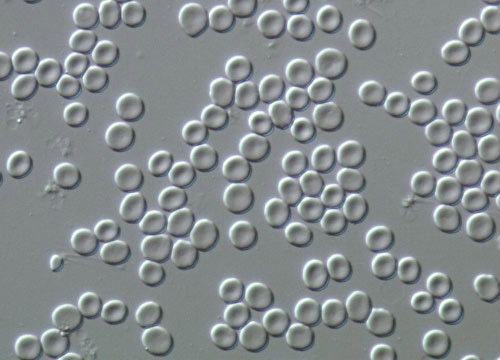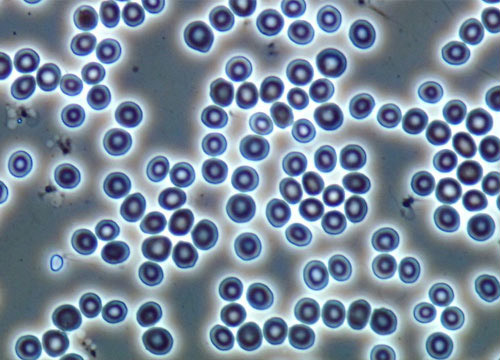Human Erythrocytes
Blood is essential to human life, delivering vital elements and removing harmful wastes during its cycle throughout the body. All human blood is composed of the same basic elements, but antigens on the surface of red blood cells produce differences in blood types. When discordant types of blood are mixed within the body, the reaction can be fatal.
 DIC
DIC
 Phase
Phase
Phase
Each component of blood has its own individual and beneficial characteristics. Plasma is primarily water, but also contains sugar, fat, protein, salts, and chemicals that aid in blood clotting. Red blood cells contain hemoglobin, which transports oxygen and carbon dioxide throughout the body as needed and is responsible for the color of the cells. White blood cells are larger than the red counterparts and produce antibodies that help fight bodily infection and disease. Platelets, however, are fragments rather than complete cells. If the body suffers an injury, platelets gather and stick to the edges of the wound, as well as release chemicals that help start the clotting process.
DIC
The blood type from an individual can be of critical importance and is determined before birth. One gene copy comes from each parent, combining to determine blood type by causing proteins called agglutinogens to exist on the surface of red blood cells. If an incompatible type of blood enters a body through a transfusion, special antibodies, known as agglutinins, in the recipient's blood will attack the foreign blood and cause blood clots to form. Although stringent testing methods are implemented, accidents do occur and transfusion patients sometimes receive the wrong blood type. In hopes of alleviating the risk, scientists are trying to find ways to chemically convert all donated blood into type O, which is compatible with all blood types.















